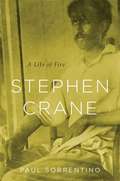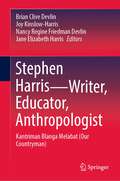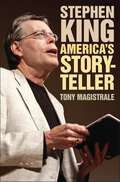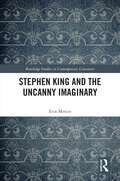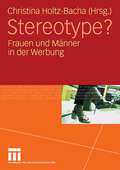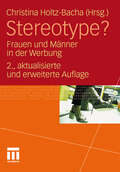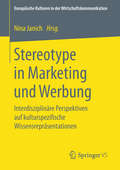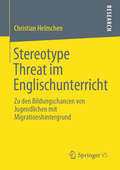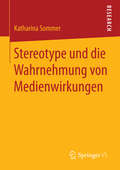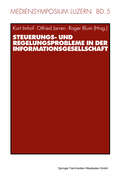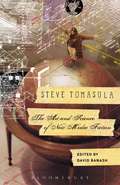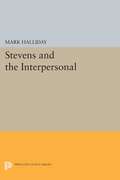- Table View
- List View
Stephen Crane: A Life Of Fire
by Paul SorrentinoStephen Crane's short, compact life--"a life of fire," he called it--is surrounded by myths, distortions, and fabrications. Paul Sorrentino has sifted through garbled chronologies and contradictory eyewitness accounts, scoured the archives, and followed in Crane's footsteps. The result is the most accurate account of the poet and novelist to date.
A Stephen Crane Encyclopedia
by Stanley WertheimThe publication of The Red Badge of Courage in 1895 brought Stephen Crane instant fame at age 23. At 28, he was dead. In the brief span of his literary career, Crane enjoyed a significant measure of renown as well as notoriety, but his reputation rested almost entirely upon his war novel, and he felt that his talent had ultimately been misjudged. From his adolescence until his death, Crane was a professional journalist. To this day, most educated American readers know him only as the author of the most realistic Civil War novel ever written, three or four action-packed short stories, and a handful of iconoclastic free-verse poems. Crane was befriended and admired by some of the most important literary figures of his time, such as William Dean Howells, Willa Cather, Joseph Conrad, Henry James, and H. G. Wells. He has also been called a realist, a naturalist, an impressionist, a symbolist, and an existentialist. This reference book provides a more complete picture of Crane's short but furiously creative life and encourages a more extensive appreciation of his works.The volume includes hundreds of entries for members of Crane's immediate and extended family; close friends and associates; educational institutions that he attended; places where he resided; publishers and syndicates by whom he was employed; literary movements with which he is usually associated; and the works of fiction, poetry, and journalism that he wrote. Thus the book shows that he was a pioneer in the development of a number of genres in modern American fiction and poetry; that he was the first literary chronicler of the burgeoning slums of urban America who refused to sentimentalize his materials; that his Western stories reveal the steady retreat of the American frontier before the encroachments of a modern Europeanized civilization; and that his short stories and poems engage a number of enduring themes. Many of the entries cite works for further reading, and the volume includes a chronology and a bibliography of the most important studies of his life and writing.
Stephen Greenblatt's Renaissance Self-Fashioning: From More to Shakespeare (The Macat Library)
by Liam HaydonWhat is a self? Greenblatt argues that the 16th century saw the awakening of modern self-consciousness, the ability to fashion an identity out of the culture and politics of one’s society. In a series of brilliant readings, Greenblatt shows how identity is constructed in the work of Shakespeare, Marlowe, Spenser and other Renaissance writers. A classic piece of literary criticism, and the origins of the New Historicist school of thought, Renaissance Self-Fashioning remains a critical and challenging text for readers of Renaissance literature.
Stephen Greenblatt's Renaissance Self-Fashioning: From More to Shakespeare (The Macat Library)
by Liam HaydonWhat is a self? Greenblatt argues that the 16th century saw the awakening of modern self-consciousness, the ability to fashion an identity out of the culture and politics of one’s society. In a series of brilliant readings, Greenblatt shows how identity is constructed in the work of Shakespeare, Marlowe, Spenser and other Renaissance writers. A classic piece of literary criticism, and the origins of the New Historicist school of thought, Renaissance Self-Fashioning remains a critical and challenging text for readers of Renaissance literature.
Stephen Harris—Writer, Educator, Anthropologist: Kantriman Blanga Melabat (Our Countryman)
by Brian Clive Devlin Joy Kinslow-Harris Nancy Regine Friedman Devlin Jane Elizabeth HarrisThis book documents the impact of Stephen Harris’s works in Aboriginal education, Aboriginal learning styles, domains of language use and bilingual-bicultural education. It provides a summary and critique of Stephen Harris's key ideas, particularly those on bilingual-bicultural education. This book also profiles the man, his background, his beliefs and talents. It showcases contributions and personal reflections from Stephen’s family, wife, close colleagues, and many of those influenced by his work. This festschrift explores the professional life and work of Stephen Harris as an educator and anthropologist who worked in the Northern Territory of Australia.
Stephen King: America's Storyteller (Non-ser.)
by Tony MagistraleThis analysis of the work of Stephen King explores the distinctly American fears and foibles that King has celebrated, condemned, and generally examined in the course of his wildly successful career.Stephen King: America's Storyteller explores the particular American-ness of Stephen King's work. It is the first major examination to follow this defining theme through King's 40-year career, from his earliest writings to his most recent novels and films made from them.Stephen King begins by tracing Stephen King's rise from his formative years to his status as a one of the most popular writers in publishing history. It then takes a close look at the major works from his canon, including The Shining, The Stand, It, Dolores Claiborne, and The Dark Tower. In these works and others, author Tony Magistrale focuses on King's deep rooted sense of the American experience, exemplified by his clear-eyed presentation of our historical and cultural foibles and scars; his gallery of unlikely friendships that cross race, age, and class boundaries; and his transcendent portrayals of uniquely American survival instincts, fellowship, and acts of heroism from the least likely of sources.
Stephen King: A Biography (Greenwood Biographies)
by Albert RollsNow known worldwide for his horror creations in best-selling books and popular film adaptations, Stephen King spent years in obscurity trying to find his voice and his audience. For much of his career he chose to remain in the small-town Maine of his youth, far from glittering publishing and film centers, yet few American writers can now equal his hold on audiences worldwide. This biography traces King's evolution from would-be pulp magazine writer to master of his craft, whose work both epitomizes and transcends the horror genre.
Stephen King and American History
by Tony Magistrale Michael J. BlouinThis book surveys the labyrinthine relationship between Stephen King and American History. By depicting American History as a doomed cycle of greed and violence, King poses a number of important questions: who gets to make history, what gets left out, how one understands one's role within it, and how one might avoid repeating mistakes of the past. This volume examines King's relationship to American History through the illumination of metanarratives, adaptations, "queer" and alternative historical lenses, which confront the destructive patterns of our past as well as our capacity to imagine a different future. Stephen King and American History will present readers with an opportunity to place popular culture in conversation with the pressing issues of our day. If we hope to imagine a different path forward, we will need to come to terms with this enclosure—a task for which King's corpus is uniquely well-suited.
Stephen King and American History
by Tony Magistrale Michael J. BlouinThis book surveys the labyrinthine relationship between Stephen King and American History. By depicting American History as a doomed cycle of greed and violence, King poses a number of important questions: who gets to make history, what gets left out, how one understands one's role within it, and how one might avoid repeating mistakes of the past. This volume examines King's relationship to American History through the illumination of metanarratives, adaptations, "queer" and alternative historical lenses, which confront the destructive patterns of our past as well as our capacity to imagine a different future. Stephen King and American History will present readers with an opportunity to place popular culture in conversation with the pressing issues of our day. If we hope to imagine a different path forward, we will need to come to terms with this enclosure—a task for which King's corpus is uniquely well-suited.
Stephen King and the Uncanny Imaginary (Routledge Studies in Contemporary Literature)
by Erin MercerOffering an insightful examination of Stephen King’s fiction, this book utilises a psychoanalytical approach drawing on Freud’s theory of the uncanny. It demonstrates how entrenched King’s work is in a literary tradition influenced by psychoanalytic theory, as well as the ways that King evades and amends Freud. Such an approach positions King’s texts not simply as objects of interpretation that might yield latent meaning, but as producers of meaning. King can certainly be read through the lens of the uncanny, but this book also aims to consider the uncanny through the lens of King. Organised around specific elements of the uncanny that can be found in King’s fiction, this book explores the themes of death and the return of the dead, monstrosity, telepathy, inanimate objects becoming menacingly animate, and spooky children. Popular texts are considered, such as IT, The Shining, and Pet Sematary, as well as less discussed work, including The Institute, The Regulators and Desperation. The book’s central argument is that King’s uncanny motifs offer insightful commentary on what is repressed in contemporary culture and insist on the failure of scientific rationalism to explain the world. King’s uncanny imaginary rejects dualistic notions of an experiencing self in an inert physical world and insists that psychic experience is bound up with the environmental. This book will be of interest to students and scholars of contemporary and popular literature, gothic and horror studies, and cultural studies.
Stephen King and the Uncanny Imaginary (Routledge Studies in Contemporary Literature)
by Erin MercerOffering an insightful examination of Stephen King’s fiction, this book utilises a psychoanalytical approach drawing on Freud’s theory of the uncanny. It demonstrates how entrenched King’s work is in a literary tradition influenced by psychoanalytic theory, as well as the ways that King evades and amends Freud. Such an approach positions King’s texts not simply as objects of interpretation that might yield latent meaning, but as producers of meaning. King can certainly be read through the lens of the uncanny, but this book also aims to consider the uncanny through the lens of King. Organised around specific elements of the uncanny that can be found in King’s fiction, this book explores the themes of death and the return of the dead, monstrosity, telepathy, inanimate objects becoming menacingly animate, and spooky children. Popular texts are considered, such as IT, The Shining, and Pet Sematary, as well as less discussed work, including The Institute, The Regulators and Desperation. The book’s central argument is that King’s uncanny motifs offer insightful commentary on what is repressed in contemporary culture and insist on the failure of scientific rationalism to explain the world. King’s uncanny imaginary rejects dualistic notions of an experiencing self in an inert physical world and insists that psychic experience is bound up with the environmental. This book will be of interest to students and scholars of contemporary and popular literature, gothic and horror studies, and cultural studies.
The Stepmother Tongue: An Introduction to New Anglophone Fiction
by John SkinnerThere are numerous twentieth century writers in English who are not technically native speakers of the language, and whose relation to it is ambivalent, problematic or even hostile: by a simple kinship analogy one may often speak of the 'stepmother tongue'. Whilst fully aware of the current debates in postcolonial theory, John Skinner is also conscious of its sometimes unhelpful complexities and contradictions. The focus of this study is thus firmly on the fictional practice of the writers discussed. He offers the reader an insight into the diversity and rewards of contemporary anglophone fiction, whilst analysing some eighty individual texts. A uniquely comprehensive guide, the book will be welcomed by students and teachers of postcolonial literature.
Stereotype?: Frauen und Männer in der Werbung
by Christina Holtz-BachaFrauen sind jung, schön und schlank. Männer sind harte Jungs, die Tölpel in der Küche oder sehen einfach nur gut aus. Die Klage darüber, dass die Werbung Frauen und Männer auf solche Stereotypen reduziert, ist ebenso alt wie die Befürchtungen, dass diese Stereotypen gesellschaftliche Auswirkungen haben. Gelten sie heute noch? Dieses Buch zieht Bilanz nach rund 50 Jahren Forschung zu Werbung und Geschlechterstereotypen und legt neue Ergebnisse aus der Analyse von Werbung vor sowie darüber, wie Rezipientinnen und Rezipienten mit solcher Werbung umgehen.
Stereotype?: Frauen und Männer in der Werbung
by Christina Holtz-BachaFrauen sind jung, schön und schlank. Männer sind harte Jungs, die Tölpel in der Küche oder sehen einfach nur gut aus. Die Klage darüber, dass die Werbung Frauen und Männer auf solche Stereotypen reduziert, ist ebenso alt wie die Befürchtungen, dass diese Stereotypen gesellschaftliche Auswirkungen haben. Gelten sie heute noch? Dieses Buch zieht Bilanz nach rund 50 Jahren Forschung zu Werbung und Geschlechterstereotypen und legt neue Ergebnisse aus der Analyse von Werbung vor sowie darüber, wie Rezipientinnen und Rezipienten mit solcher Werbung umgehen.
Stereotype and Destiny in Arthur Schnitzler’s Prose: Five Psycho-Sociological Readings (New Directions in German Studies)
by Marie KolkenbrockWhat was the function of the invocation of destiny in the increasingly secularized era of turn-of-the-century Vienna? By exploring this question, Stereotype and Destiny in Arthur Schnitzler's Prose offers a new psycho-sociological perspective on the narrative works of Arthur Schnitzler. While Vienna 1900 as a site of crisis has been established in the scholarship, this book focuses on the presence of forces that deny the existence of said crisis and work to contain its subversive and critical potential. Stereotype and destiny emerge in Schnitzler's prose texts as a form of these counter-critical forces. In her readings, Kolkenbrock shows that stereotype and destiny serve as an interrelated coping mechanism for a central psychological conflict of modernity: the paradoxical need to be recognized as 'normal' and 'special' at the same time. While, through the complex of "stereotype and destiny," Schnitzler's prose addresses central modern questions of identity and subjecthood, Kolkenbrock's close readings also reveal how the texts inscribe themselves aesthetically in the literary tradition of Romanticism and as such offer crucial sources for understanding Schnitzler's representations of embattled subjecthood within broader social and aesthetic traditions.
Stereotype and Destiny in Arthur Schnitzler’s Prose: Five Psycho-Sociological Readings (New Directions in German Studies #21)
by Marie KolkenbrockWhat was the function of the invocation of destiny in the increasingly secularized era of turn-of-the-century Vienna? By exploring this question, Stereotype and Destiny in Arthur Schnitzler's Prose offers a new psycho-sociological perspective on the narrative works of Arthur Schnitzler. While Vienna 1900 as a site of crisis has been established in the scholarship, this book focuses on the presence of forces that deny the existence of said crisis and work to contain its subversive and critical potential. Stereotype and destiny emerge in Schnitzler's prose texts as a form of these counter-critical forces. In her readings, Kolkenbrock shows that stereotype and destiny serve as an interrelated coping mechanism for a central psychological conflict of modernity: the paradoxical need to be recognized as 'normal' and 'special' at the same time. While, through the complex of "stereotype and destiny," Schnitzler's prose addresses central modern questions of identity and subjecthood, Kolkenbrock's close readings also reveal how the texts inscribe themselves aesthetically in the literary tradition of Romanticism and as such offer crucial sources for understanding Schnitzler's representations of embattled subjecthood within broader social and aesthetic traditions.
Stereotype in Marketing und Werbung
by Nina JanichDer Band vereinigt Beiträge verschiedenster Disziplinen zu Stereotypen in Werbung und Marketing. Schwerpunkte liegen auf Risiken und Potenzialen von Stereotypen in der Markt- und Personalkommunikation, auf ihrer Bedeutung im Nation/Place Branding sowie auf sozialen Stereotypisierungen in unterschiedlichen Kontexten (u.a. in Markenkommunikation, B2B, HRM). Der Begriff des Stereotyps hat sich – so das Ergebnis – fachübergreifend in Sprach-, Kommunikations-, Medien-, Werbe- und Wirtschaftswissenschaft als ein Konzept bewährt, das Einsichten über kultur-, zeit- und branchenspezifische Orientierungs- und Identifikationsangebote in der Unternehmenskommunikation verspricht.
Stereotype Threat im Englischunterricht: Zu den Bildungschancen von Jugendlichen mit Migrationshintergrund
by Christian HelmchenIn diesem Buch untersucht Christian Helmchen, ob sich Stereotype Threat – konzeptualisiert durch Stigma Consciousness, Ingroup Identification und Domain Identification – negativ auf Schulleistungen der Fächer Mathematik, Deutsch und Englisch auswirkt. Die Domäne Englisch steht aufgrund der besonderen Bedeutung von Sprache für die Identität von Schülern mit Migrationshintergrund und der mit ihrer Mehrsprachigkeit einhergehenden besonderen sprachlichen Kompetenz im Fokus der Untersuchung. Die Ergebnisse zeigen, dass Stereotype Threat einen negativen Einfluss auf Schulleistung hat, vor allem in der Domäne Englisch. Zugleich wird deutlich, dass die Prädiktoren auch aufeinander wirken und Effekte auf Leistung mediiert werden.
Stereotype und die Wahrnehmung von Medienwirkungen
by Katharina SommerKatharina Sommer fragt danach, wie die Aktivierung von Stereotypen die Einschätzung von Medienwirkungen auf Dritte beeinflussen kann: Stereotypisierung findet meist unbewusst statt und ist in sozialen Situationen ein alltäglich ablaufender Prozess. Die Autorin verbindet die Frage nach den Einflussfaktoren auf die Wahrnehmung von Medienwirkungen mit dem Prozess der Stereotypisierung zu unterschiedlichen Personengruppen. Auf diese Weise verdeutlicht sie, dass die Einschätzung von Medienwirkung situativ unterschiedlich ausfallen kann, je nachdem, welche Stereotype gerade aktiviert wurden.
Sterne’s Whimsical Theatres of Language: Orality, Gesture, Literacy (Studies in Early Modern English Literature)
by Alexis TadiéThis study addresses the intricate links between oral culture and literate culture in the eighteenth century. Tadié traces how perceptions and representations of language move from a dominance of the spoken work to a dominance of the written word; and this is echoed in the order of the five chapters on conversation, gesture, theatre, fiction, and print. Tadié offers a reading of Sterne's works, arguing that the use of language lies at the centre of Sterne's art; he approaches the historical dimension of the texts in the context of eighteenth-century theories of language. He brings into focus the heterogeneity of Sterne's texts; and he demonstrates how Sterne's awareness for the variations of language links up with his interest in the form of the book, and with the use of all the potentialities of print. The study broaches the issue of the 'rise of the novel' in the eighteenth century. it refuses the idea of progress, or of slow emergence of the novel in the eighteenth century, which would lead progressively from Defoe to the Fielding-Richardson debate, to a possible view of Sterne as the great ironist of the form of the novel. Tadié asserts that Sterne's writings do not simply address the nature of the novel, but they engage with all the forms of language representation made available by the culture of the age.
Sterne’s Whimsical Theatres of Language: Orality, Gesture, Literacy (Studies in Early Modern English Literature)
by Alexis TadiéThis study addresses the intricate links between oral culture and literate culture in the eighteenth century. Tadié traces how perceptions and representations of language move from a dominance of the spoken work to a dominance of the written word; and this is echoed in the order of the five chapters on conversation, gesture, theatre, fiction, and print. Tadié offers a reading of Sterne's works, arguing that the use of language lies at the centre of Sterne's art; he approaches the historical dimension of the texts in the context of eighteenth-century theories of language. He brings into focus the heterogeneity of Sterne's texts; and he demonstrates how Sterne's awareness for the variations of language links up with his interest in the form of the book, and with the use of all the potentialities of print. The study broaches the issue of the 'rise of the novel' in the eighteenth century. it refuses the idea of progress, or of slow emergence of the novel in the eighteenth century, which would lead progressively from Defoe to the Fielding-Richardson debate, to a possible view of Sterne as the great ironist of the form of the novel. Tadié asserts that Sterne's writings do not simply address the nature of the novel, but they engage with all the forms of language representation made available by the culture of the age.
Steuerungs- und Regelungsprobleme in der Informationsgesellschaft (Mediensymposium #5)
by Kurt Imhof Otfried Jarren Roger Blumit Bezug auf die bemerkenswerten Veränderungen der öffentlichen politischen Kommunikation seit den sechziger Jahren, insbesondere jedoch seit der Deregulierung der elektronischen Medien und der ökonomischen Konzentration, Globalisierung und Diversifizierung des Mediensystems in den achtziger Jahren, gilt das Interesse des Bandes den Steuerungs- und Regelungsproblemen in der Informationsgesellschaft. Dies erfordert eine gesamtgesellschaftliche Perspektive, die das Verhältnnis der Systeme Politik, Ökonomie und Medien fokussiert. Der gewandelte Zusammenhang der drei Teilsysteme lässt sich beschreiben als Resultat zweier gegenläufiger Entwicklungen: der Ausdifferenzierung des Mediensystems vom politischen System einerseits sowie der Entdifferenzierung der Medien vom ökonomischen System andererseits.
Steve Tomasula: The Art and Science of New Media Fiction
by David BanashSteve Tomasula's work exists at the cutting edges of scientific knowledge and literary techniques. As such, it demands consideration from multiple perspectives and from critics who can guide the reader through the formal innovations and multimedia involutions while providing critical scientific, aesthetic, historical, and technical contexts. This book, the first of its kind, provides this framework, showing readers the richness and relevance of the worlds Tomasula constructs.Steve Tomasula's work is redefining the form of the novel, reinventing the practice of reading, and wrestling with the most urgent questions raised by massive transformations of media and biotechnologies. His work not only charts these changes, it formulates the problems that we have making meaning in our radically changing technological contexts. Vast in scope, inventive in form, and intimate in voice, his novels, short stories, and essays are read and taught by a surprisingly diverse array of scholars in fields ranging from contemporary experimental writing and literary criticism to the history of science, biotechnology and bioart, book studies, and digital humanities.
Steve Tomasula: The Art and Science of New Media Fiction
by David BanashSteve Tomasula's work exists at the cutting edges of scientific knowledge and literary techniques. As such, it demands consideration from multiple perspectives and from critics who can guide the reader through the formal innovations and multimedia involutions while providing critical scientific, aesthetic, historical, and technical contexts. This book, the first of its kind, provides this framework, showing readers the richness and relevance of the worlds Tomasula constructs.Steve Tomasula's work is redefining the form of the novel, reinventing the practice of reading, and wrestling with the most urgent questions raised by massive transformations of media and biotechnologies. His work not only charts these changes, it formulates the problems that we have making meaning in our radically changing technological contexts. Vast in scope, inventive in form, and intimate in voice, his novels, short stories, and essays are read and taught by a surprisingly diverse array of scholars in fields ranging from contemporary experimental writing and literary criticism to the history of science, biotechnology and bioart, book studies, and digital humanities.
Stevens and the Interpersonal
by Mark HallidayWith Wallace Stevens emerging as a father figure for American poetry of the late twentieth century, Mark Halliday argues that it is time for this "poet of ideas" to undergo an ethical critique. In this bold, accessible reconsideration of Stevens' work, he insists on the importance of interpersonal relations in any account of human life in the modern world. Although Stevens outwardly denies aspects of life that center on such relations as those between friends, lovers, family members, and political constituents, Halliday uncovers in his poetry an anxious awareness of the importance of these relations. Here we see the difficulties Stevens made for himself in wanting to offer a thoroughly satisfying version of secular spiritual health in the modern world without facing up to the moral and psychological implications of his own interpersonal needs, problems, and responsibilities. The final chapter reveals, however, an unusually encouraging "avuncular" attitude toward the reader of the poetry, which may be felt to redeem Stevens from the alienation observed earlier. Halliday develops his views by way of comparisons between Stevens and other poets, especially Thomas Hardy, Emily Dickinson, Robert Frost, and John Ashbery.Originally published in 1991.The Princeton Legacy Library uses the latest print-on-demand technology to again make available previously out-of-print books from the distinguished backlist of Princeton University Press. These editions preserve the original texts of these important books while presenting them in durable paperback and hardcover editions. The goal of the Princeton Legacy Library is to vastly increase access to the rich scholarly heritage found in the thousands of books published by Princeton University Press since its founding in 1905.
